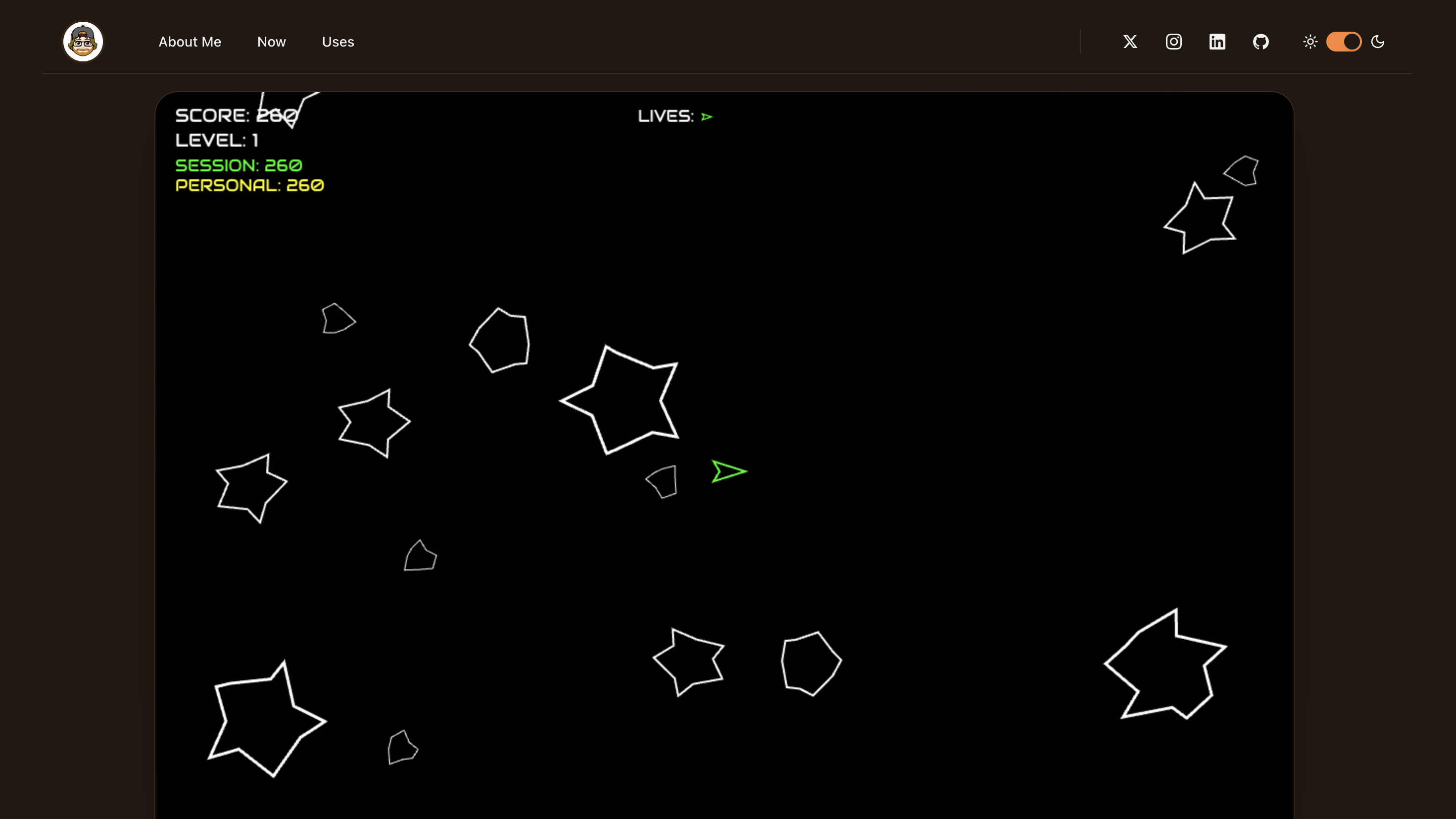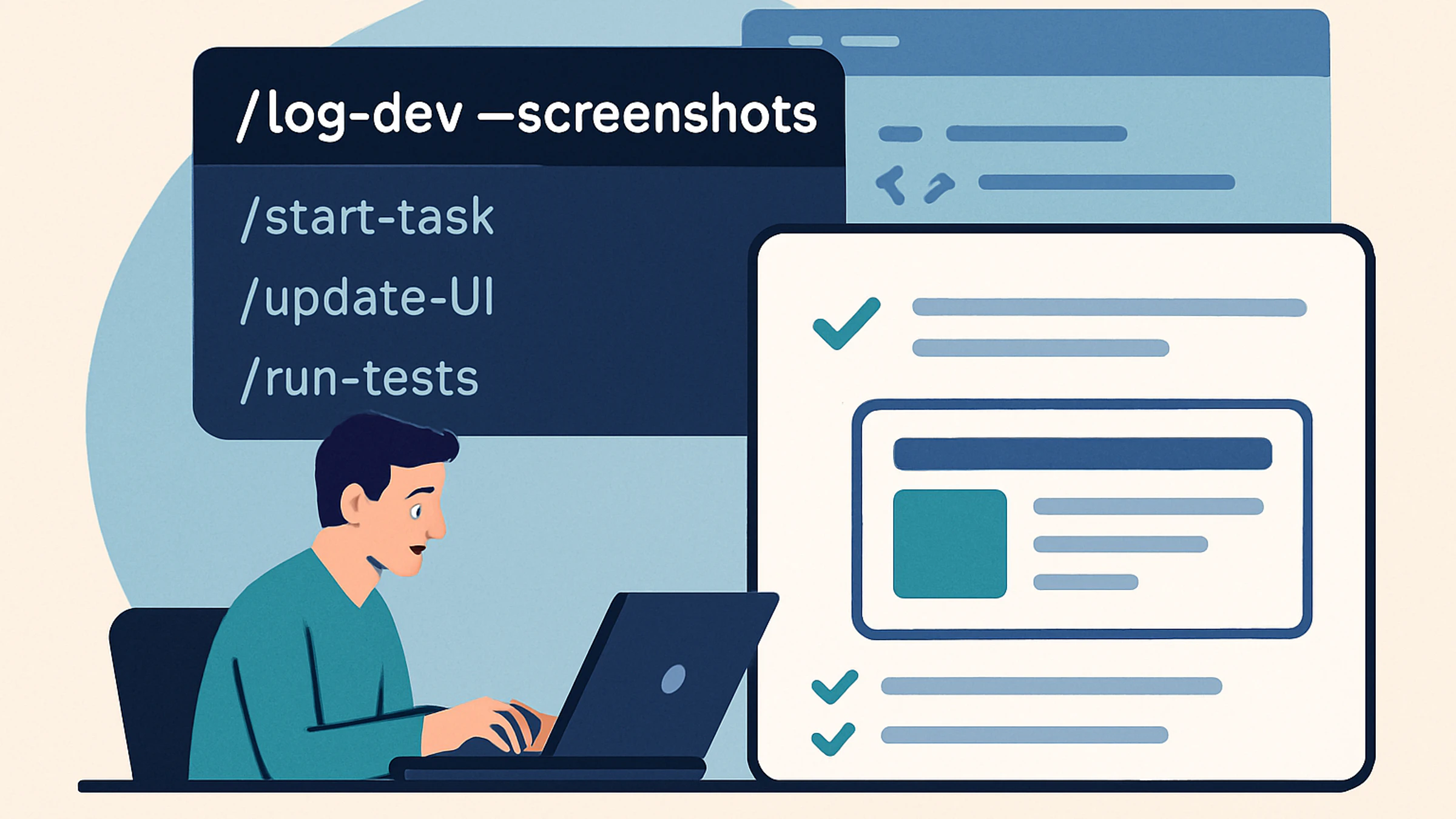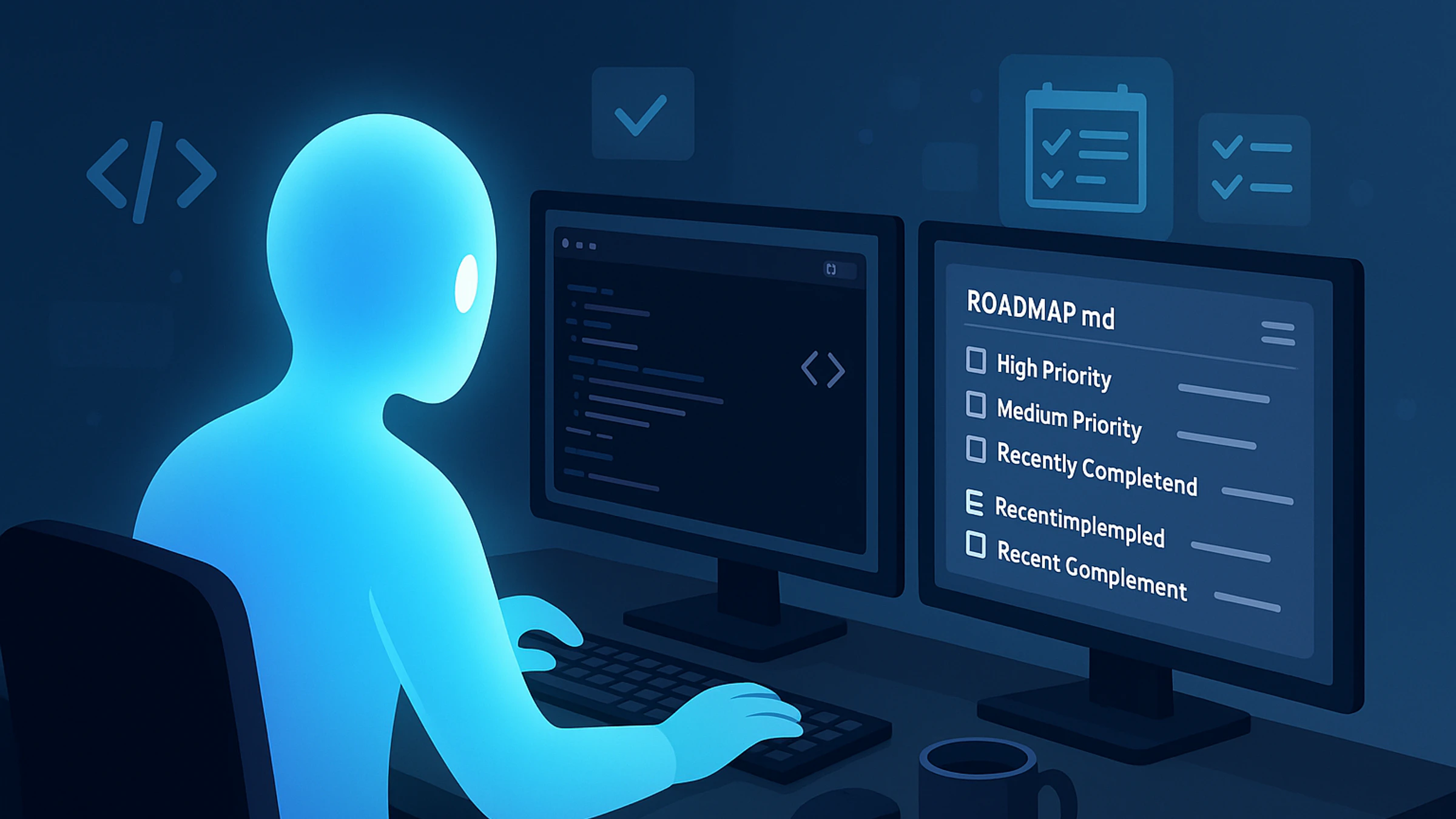I Asked AI to Make My Site 'Pop' — It Built Asteroids Instead

I was half-watching Goodfellas the other night, casually tweaking my personal site's hero section, when I typed this into Claude Code:
can you give me some ideas to make this more modern looking? looking for a Hero that pops with my name and info.
A couple of hours later, I had shipped a complete Asteroids game hidden in my site. With physics. With levels. With high scores. All without writing a single line of code myself.
As a developer with 20+ years of experience, I have mixed feelings about how easy this was. Part of me is genuinely unsettled by watching hundreds of lines of production-quality TypeScript materialize from casual conversation. But I also understand something important: knowing what to ask for and how to guide the AI is still a crucial skill. The difference between getting a basic script and a sophisticated, performant game lies in understanding the domain well enough to steer the conversation.
This is the story of how Claude Code turned a throwaway design request into a production-ready retro gaming experience—and what it reveals about the evolving role of developers in an AI-assisted world.
The Accidental Journey Begins
<div style={{ textAlign: 'center', marginBottom: '2rem' }}> <img src="/images/2025/07/new-hero.gif" alt="The modernized hero section with floating animated bubbles and enhanced typography" style={{ maxWidth: '100%', height: 'auto' }} /> <p style={{ fontSize: '0.875rem', color: '#666', marginTop: '0.5rem', fontStyle: 'italic' }} > The modernized hero section after Claude Code's initial enhancements—floating bubbles that would soon become asteroids </p> </div>What started as a simple UI update quickly evolved. Claude Code enhanced my hero section with floating geometric shapes, but then I got curious:
can the bubbles in the background slowly float around?
can we have them move around the background like the asteroids in the game asteroids? when they leave the container, they reenter on the opposite side?
I wasn't planning to build a game. I was just making conversation while Henry Hill was explaining how to slice garlic properly. But when Claude Code made those bubbles move like asteroids, it sparked an idea.
From Idea to Game in One Request
Then came the moment that changed everything:
<div style={{ textAlign: 'center', marginBottom: '2rem' }}> <img src="/images/2025/07/activate-game.gif" alt="The moment of pressing Cmd+A transforms the professional hero section into an arcade game" style={{ maxWidth: '100%', height: 'auto' }} /> <p style={{ fontSize: '0.875rem', color: '#666', marginTop: '0.5rem', fontStyle: 'italic' }} > Press Cmd+A and watch the professional portfolio transform into an arcade cabinet </p> </div>now, let's add an easter egg.. If I hit cmd A - an asteroids game starts in the container. use the arrow keys and space bar to shoot. use z to thrust the ship. allow it to destroy the bubbles and elements one by one in the container. esc will reset the container
This single prompt resulted in Claude Code generating a working game—which was impressive on its own. But the real magic happened through iteration. Over the course of our conversation, we built:
- Complete game physics with momentum and screen wrapping
- Collision detection between ship, bullets, and asteroids
- Authentic asteroid shapes with classic wireframe styling
- Asteroid splitting mechanics (large → medium → small)
- Ship explosion animations with debris
- Lives system with invulnerability periods
- Progressive difficulty with level increases
- High score tracking with local storage
- Retro splash screen with game controls and scoring info
What started as a basic shooting game evolved into a faithful Asteroids recreation through natural conversation. Each request built on the last, and Claude Code never lost track of what we were building.
Iterative Refinement Through Natural Language
The beauty of Claude Code isn't just the initial generation—it's the iterative refinement. As I played the game, I could make requests like:
looks like when i shoot the container, the entire container disappears.
instead of z for thrust, use the up arrow
the keyboard commands are not working. they are causing the screen to scroll when i hit space. it's like the game does not have focus
Each issue was diagnosed and fixed immediately. No debugging sessions, no Stack Overflow searches, no wrestling with event propagation. Just natural language problem-solving.
<div style={{ textAlign: 'center', marginBottom: '2rem' }}> <img src="/images/2025/07/game-in-action.gif" alt="The finished Asteroids game running in the browser, showing the classic vector-style graphics, HUD with score tracking, and authentic 80s arcade feel" style={{ maxWidth: '100%', height: 'auto' }} /> <p style={{ fontSize: '0.875rem', color: '#666', marginTop: '0.5rem', fontStyle: 'italic' }} > The finished Asteroids game with authentic 1979 vector graphics and retro splash screen </p> </div>Adding Authentic 80s Flavor
To make it feel genuinely retro, I asked for:
can we make the asteroids more like the original. the smaller they get, the thinner the stroke of the line.
When it came time to implement scoring, I didn't just guess at the values. I asked Claude Code to research the original 1979 Asteroids scoring system. It came back with the authentic point values: large asteroids (20 points), medium (50 points), and small (100 points)—rewarding precision over easy targets.
can we use this font for the splash screen? https://fonts.google.com/?query=CodeMan38
Claude Code researched Google Fonts, selected Audiowide for its retro-futuristic feel, and implemented it properly with Next.js font optimization. The result feels authentically 1979.
<div style={{ textAlign: 'center', marginBottom: '2rem' }}> <img src="/images/2025/07/splash-screen.png" alt="The retro splash screen showing ASTEROIDS HERO DESTROYER title, game controls, and classic arcade scoring information" style={{ maxWidth: '100%', height: 'auto' }} /> <p style={{ fontSize: '0.875rem', color: '#666', marginTop: '0.5rem', fontStyle: 'italic' }} > The retro splash screen complete with Audiowide font, controls, and authentic arcade scoring values </p> </div>The Security Conversation
When I asked about persistent high scores, Claude Code and I had a genuine technical discussion:
curious if i can create a text file i push with the site that could store the high score.
Instead of just implementing my request, Claude Code entered "plan mode" and researched the limitations of static file storage, serverless environments, and security implications. We explored:
- GitHub Actions approach: Auto-updating JSON files (rejected for security)
- External APIs: JSONBin and similar services (rejected for dependency)
- Local storage: Secure, private, zero-cost (chosen)
This wasn't blind code generation—it was collaborative technical decision-making. The AI actually talked me out of my initial idea for a better solution.
The Difference: A Partner That Actually Listens
After months of using Cursor and GitHub Copilot, working with Claude Code felt fundamentally different. Here's what stood out:
Claude Code didn't wander. When I asked for an update, it updated exactly what I asked—nothing more. It didn't rewrite features that weren't part of the prompt. It didn't remove code on a whim because it thought it was doing me a favor. It did what I asked, and nothing more.
This might sound basic, but it's revolutionary. Other AI coding tools often suffer from:
- Feature creep: Adding "improvements" you didn't ask for
- Context drift: Losing track of what you're actually trying to accomplish
- Overzealous refactoring: Rewriting working code because it thinks it knows better
- Destructive helpfulness: Removing features while "cleaning up"
Claude Code, in contrast, maintains laser focus on your actual request. It's everything you want in a coding partner: attentive, precise, and respectful of your existing work. When I said "make the bubbles float like asteroids," it made the bubbles float like asteroids. When I said "add lives," it added lives—without touching the scoring system or level progression.
This discipline transforms AI from an unpredictable assistant into a reliable collaborator.
Performance Optimization on Request
When I realized the game was loading with the initial page, I asked for an optimization:
let's look at loading this game component on demand so it doesn't load with the initial page.
Claude Code implemented:
- React lazy loading with dynamic imports
- Suspense boundaries for graceful loading
- Event interception to trigger component loading
- Auto-start functionality to fix the "double Cmd+A" issue
The lazy loading ensures the game component isn't initialized until it's actually needed, preventing unnecessary memory usage and computation on initial page load.
Progressive Enhancement in Real-Time
The feature evolution happened organically:
- Level 1: Floating bubbles for visual interest
- Level 2: Asteroid-style movement with screen wrapping
- Level 3: Full game with shooting and collision
- Level 4: Authentic Asteroids mechanics with splitting
- Level 5: Lives system with explosion animations
- Level 6: Progressive difficulty with level progression
- Level 7: High score system with achievements
- Level 8: Performance optimization and security review
Each level built naturally on the previous one, guided by curiosity rather than a master plan.
The Technical Achievement
The final easter egg includes:
- Complete physics engine: Momentum, friction, screen wrapping
- Authentic 1979 scoring: Large asteroids (20pts), Medium (50pts), Small (100pts)
- Progressive difficulty: 10% speed increase per level
- Achievement system: Session and personal bests with localStorage
- Performance optimized: Dynamic loading, 60fps canvas rendering
- Accessibility considered: Proper keyboard focus and event handling
- Security first: No external dependencies or API vulnerabilities
What This Means for Development
This experience fundamentally changed how I think about building features. The traditional workflow of:
- Plan the feature
- Research implementation approaches
- Write code
- Debug issues
- Optimize performance
- Write documentation
Became:
- Have a conversation about what you want
- Iterate through natural language
- Ship
The entire easter egg—from concept to deployment—took one evening. The code quality is production-ready. The architecture follows React best practices. The performance is optimized. The security is sound.
The Goodfellas Factor
Maybe the key ingredient was not thinking too hard about it. While Ray Liotta was explaining the restaurant business, I was just chatting with an AI about making my site look cooler. No pressure, no timeline, no specifications.
The best features sometimes emerge from casual curiosity rather than formal requirements.
Try It Yourself
The easter egg is live on my site right now. Visit the homepage and press Cmd+A (Mac) or Ctrl+A (Windows) to discover it. See if you can beat my personal best!
Screenshot idea: Call-to-action showing the homepage with subtle hint about the easter egg
The Future of Feature Development
Claude Code didn't just generate code—it was a technical partner. It researched solutions, considered trade-offs, suggested optimizations, and even talked me out of bad ideas.
This feels like a glimpse into the future of development: where the barrier between idea and implementation becomes conversation rather than coding.
The game is still there, hidden in my site. Now I need to get back to the actual features people can see—like finishing that blog post about my experience with Raycast extensions. But first, maybe just one more game...
The complete easter egg documentation and source code are available in the project repository. Press Cmd+A on the homepage to play!
I wrote this post inside BlackOps, my content operating system for thinking, drafting, and refining ideas — with AI assistance.
If you want the behind-the-scenes updates and weekly insights, subscribe to the newsletter.
Related Posts

Vibe Coding Isn’t the Problem - Vague Thinking Is

Command-Driven Development Logging with Visual Progress: A Better Way to Track Development with Claude Code
